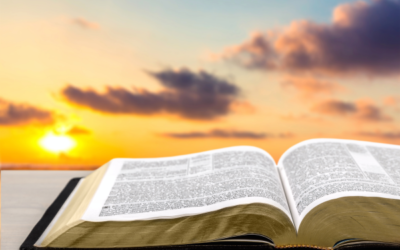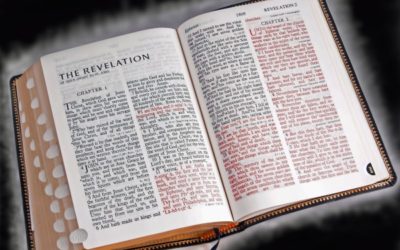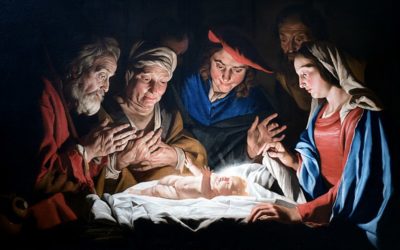In the two months between May 20 and July 20, 1831, the Prophet Joseph Smith received seven revelations to guide the Church in its second year of existence. These revelations covered topics ranging from the first principles and ordinances of the gospel to missionary work, caring for the poor and needy, and the law of consecration.
Doctrine and Covenants 51
Even before Joseph and Emma Smith reached Kirtland, some of the people there had tried to live as described in Acts 4:34‒35, which said the New Testament Saints sold their “lands or houses” and “brought the prices of the things that were sold, and laid them down at the apostles’ feet: and distribution was made unto every man according as he had need.”
The Book of Mormon furnished a similar example in which “both Nephites and Lamanites . . . did deal justly one with another” and “had all things in common among them,” a system that banished poverty and class distinction and allowed all to be “partakers of the heavenly gift” (4 Nephi 1:2‒3).
The people in Kirtland who experimented with a system of having things in common failed because of selfishness and carelessness. Treating peoples’ property as their own without respecting others’ needs led to chaos and want.
Now with Saints flocking into the Kirtland area from the eastern parts of the United States, Church leaders faced the challenge of how to settle and organize them. Many of these emigrants were poor, some of them having sacrificed their property to gather with the Saints. Edward Partridge had been called as the Church’s first bishop, and on May 20, 1831, the revelation that is now section 51 of the Doctrine and Covenants instructed him on what to do with these needy souls.
To provide for them, those who had excess means would consecrate “unto the bishop for the poor and needy of my church” (verse 5).
The bishop would then “appoint unto this people their portions, every man equal according to his family,” “his circumstances,” and “his needs” (verse 3).
All this would be done “according to my laws,” the Lord explained (verse 2), and “according to the laws of the land” (verse 6). Instead of people treating everything as their own, as some had wrongly tried to do earlier, Bishop Partridge would give each recipient “a writing that shall secure unto him his portion” (verse 4).
In addition to providing the needy with a place to live, an agent would “provide food and raiment, according to the wants of this people” (verse 8).
This system was intended to eliminate poverty and allow the Saints to concentrate on spiritual things. As people worked their property successfully and ended up with more than their own families needed, they would consecrate the excess to the Church through the bishop, who would “appoint a storehouse unto this church” (verse 13) in which to keep the consecrated items until needed.
The Lord promised the Saints that if they lived this way “honestly,” they would “be one,” as he had commanded them to be (verse 9). “And whoso is found a faithful, a just, and a wise steward shall enter into the joy of his Lord, and shall inherit eternal life” (verse 19).
For the Saints who were looking to build the city of Zion, the Lord told them they were to remain in the Kirtland area just “for a little season, until I, the Lord shall provide for them otherwise, and command them to go hence” (verse 19). But to keep people from holding back while waiting for that day, the Lord commanded them to “act upon this land as for years, and this shall turn unto them for their good” (verse 17).
For more on the history of this section, click here.
Doctrine and Covenants 52
Those waiting for further instructions about building and gathering to the city of Zion did not have to wait long. On the last day of a multiday Church conference held the first week of June 1831, Joseph Smith received a revelation explaining that “the next conference . . . shall be held in Missouri, upon the land which I will consecrate unto my people” (verse 2).
The revelation also commanded Joseph Smith and Sidney Rigdon to travel to Missouri “as soon as preparations can be made” (verse 3). There it would be “made known until them the land of your inheritance” (verses 3‒5). The Lord promised to “hasten the city in its time” and “crown the faithful with joy and with rejoicing” (verse 43).
The revelation also called some of the Saints as missionaries and directed them to preach “none other things than that which the prophets and apostles have written,” “that which is taught them by the Comforter” (verse 9), and “that which they have seen and heard and most assuredly believe” (verse 36). They were to “go two by two, . . . baptizing by water, and the laying on of the hands by the water’s side” (verse 10).
The Lord promised to “cut my work short in righteousness” (verse 11). In other words, the more righteous the people became, the sooner the Lord’s work would be accomplished.
For those who still struggled to understand spiritual gifts as explained in earlier revelations, the Lord said they could tell by people’s fruits if they were guided by Him or not. Those who obeyed His ordinances, lived humbly, and brought forth good works were of Him. Those who did otherwise were not. (Verses 15‒19.)
Again, the Lord commanded them to “remember in all things the poor and the needy, the sick and the afflicted, for he that doeth not these things, the same is not my disciple” (verse 40).
For more on the history of this section, click here.
Doctrine and Covenants 53
Two days after receiving section 52, Joseph received a revelation on June 8, 1831, at the request of Algernon Sidney Gilbert. The revelation directed that he be ordained “an elder, to preach faith and repentance and remission of sins, . . . and the reception of the Holy Spirit by the laying on of hands” (verse 3). He was also called to be an agent for the Church “according to commandments which shall be given hereafter” and to accompany Joseph and Sidney to Missouri.
As with all of us who receive callings and feel uncertain about what to do in them, the Lord promised Sidney Gilbert that “the residue shall be made known in a time to come, according to your labor in my vineyard” (verse 6).
Among the principles and ordinances of the doctrine of Christ in this revelation, the Lord emphasized “that he only is saved who endureth to the end” (verse 7).
For more on the history of this section, click here.
Doctrine and Covenants 54
On June 10, 1831, the Lord gave another revelation to the Prophet on consecration. The Colesville, New York, Saints had left their homes and migrated to Ohio, where Leman Copley had covenanted to consecrate his farm for their settlement. Leman, however, broke his covenant, and Newel Knight, a leader of the Colesville Saints, asked Joseph what they were to do next.
In the revelation that is now section 54 of the Doctrine and Covenants, the Lord condemned Leman for violating his covenant, blessed the Colesville Saints who remained faithful to theirs, and commanded them to proceed to Missouri, where they were to “seek . . . a living like unto men, until I prepare a place for you” (verses 5‒9).
The instruction in this revelation surely applies to any case in which two or more people righteously covenant to do the Lord’s will, only to have one or more break their covenants. Those who remain faithful to their covenants will still receive their blessings in such situations. For example, suppose a man and woman enter into a temple sealing, and one or the other violates his or her covenants. The one who remains faithful is still entitled to all the blessings promised in the sealing ceremony.
Such situations may cause enormous pain and raise questions that will only be answered according to the Lord’s time table. The final verse in this revelation commands us all to “be patient in tribulation until I come; and behold, I come quickly, and my reward is with me, and they who have sought me early shall find rest to their souls” (verse 10).
For more on the history of this section, click here.
Doctrine and Covenants 55
William W. Phelps, a New York printer, gathered with his family to the Ohio and sought spiritual guidance from the Prophet. Joseph inquired of the Lord and received the revelation that is now section 55. In it, the Lord commanded William to be baptized, receive the Holy Ghost by the laying on of hands, and be ordained “an elder unto this church, to preach repentance and remission of sins by way of baptism” (verses 1‒2). William also received a calling assist Oliver Cowdery in “the work of printing, and of selecting and writing books for schools in this church” (verse 4).
He was told to accompany Joseph and Sidney to Missouri, “that you may be planted in the land of your inheritance to do this work” (verse 5).
For more on the history of this section, click here.
Doctrine and Covenants 56
In the New Testament parable of the sower, Jesus explained that sowed gospel seeds did not all end up the same. Some were devoured by birds. Others sprouted but soon withered “because they had no deepness of earth.” Yet others “fell among thorns” that “choked them.” Finally, the seed that “feel into good ground . . . brought forth fruit, some an hundredfold, some sixtyfold, some thirtyfold.” (Matthew 13:3‒8).
On June 15, 1831, Joseph Smith received the revelation that is now section 56 of the Doctrine and Covenants. In it, the Lord responded to converts who withered or were choked. He said the rebellious would “know . . . mine indignation” (verse 1), “shall not be saved” (verse 2), and “shall be cut off in mine own due time, after I have commanded and the commandment is broken” (verse 3).
When people rebel, the Lord can “command and revoke, as it seemeth me good; and all this to be answered upon the heads of the rebellious, saith the Lord” (verse 4).
In subsequent verses, the Lord revoked, reinforced, and gave commandments. He focused particularly on the economic disparities among the Saints and those who offered land for the migrating Saints but then changed their minds. “Wo unto you rich men, that will not give your substance to the poor,” He declared, “for your riches will canker your souls; and this shall be your lamentation in the day of visitation, and of judgment, and of indignation: The harvest is past, the summer is ended, and my soul is not saved!” (Verse 16.)
To the unworthy poor, He said, “Wo unto you poor men, whose hearts are not broken, whose spirits are not contrite, and whose bellies are not satisfied, and whose hands are not stayed from laying hold upon other men’s goods, whose eyes are full of greediness, and who will not labor with your own hands!” (Verse 17.)
“But blessed are the poor who are pure in heart, whose hearts are broken, and whose spirits are contrite,” He said, “for they shall see the kingdom of God coming in power and great glory unto their deliverance; for the fatness of the earth shall be theirs.” (Verse 18.)
For more on the history of this section, click here.
Doctrine and Covenants 57
As commanded by the Lord, Joseph Smith traveled to Missouri, and on July 20, 1831, in Jackson County, he received the revelation that is now section 57 of the Doctrine and Covenants. In the revelation, the Lord declared to the gathered Saints that Missouri was “the land which I have appointed and consecrated for the gathering of the saints” (verse 1), as well as “the land of promise, and the place for the city of Zion” (verse 2).
More specifically, the revelation declared that “the place which is now called Independence is the center place; and a spot for the temple is lying westward, upon a lot which is not far from the courthouse” (verse 3). The revelation directed the saints to purchase the lot “and also every tract lying westward, even unto the line running directly between Jew and Gentile” (verse 4), meaning the western Missouri border. They were also directed to buy “every tract bordering by the prairies.” This land was to become “an everlasting inheritance” for the Saints (verse 5).
To fulfill this commandment in an orderly way, Sidney Gilbert was to be the Church agent “to buy land in all the regions round about, inasmuch as can be done in righteousness, and as wisdom shall direct” (verse 6). Meanwhile, Bishop Edward Partridge and his assistants were to take the purchased lands “and divide unto the saints their inheritance” (verse 7).
Sidney Gilbert was also commanded to “plant himself in this place, and establish a store,” the profits of which could then be used “to buy lands for the good of the saints, and that he may obtain whatsoever things the disciples may need to plant them in their inheritance” (verse 8).
Former newspaperman William W. Phelps was also to “be planted in this place, and be established as a printer unto the church” (verse 11). Oliver Cowdery, who was well-versed in the Church’s history and doctrine, was to assist William in the printing by making sure the things he printed were “right before me, as it shall be proved by the Spirit through him” (verse 13).
For more on the history of this section, click here.
Photo credit for image at top of post: Earliest known image of the courthouse block referenced in Doctrine and Covenants 57, engraving, public domain, from https://civilwaronthewesternborder.org/islandora/object/civilwar%3A705 (accessed May 17, 2021).



